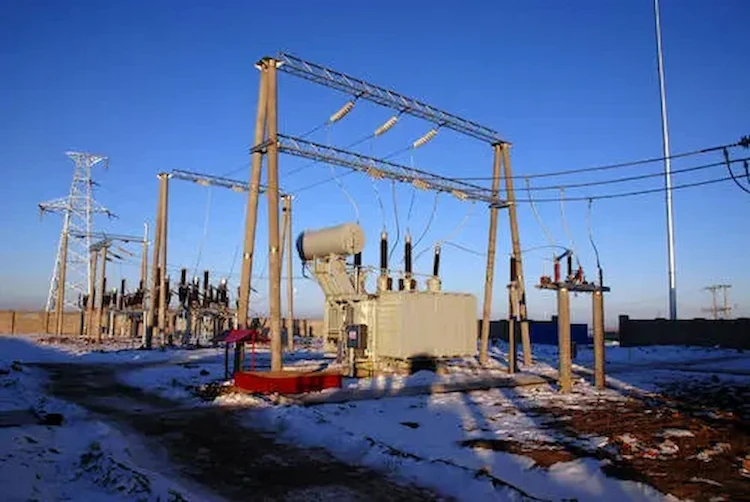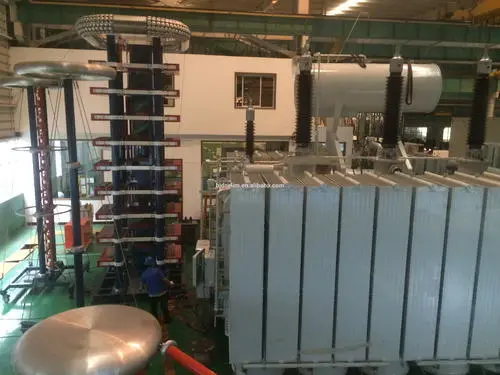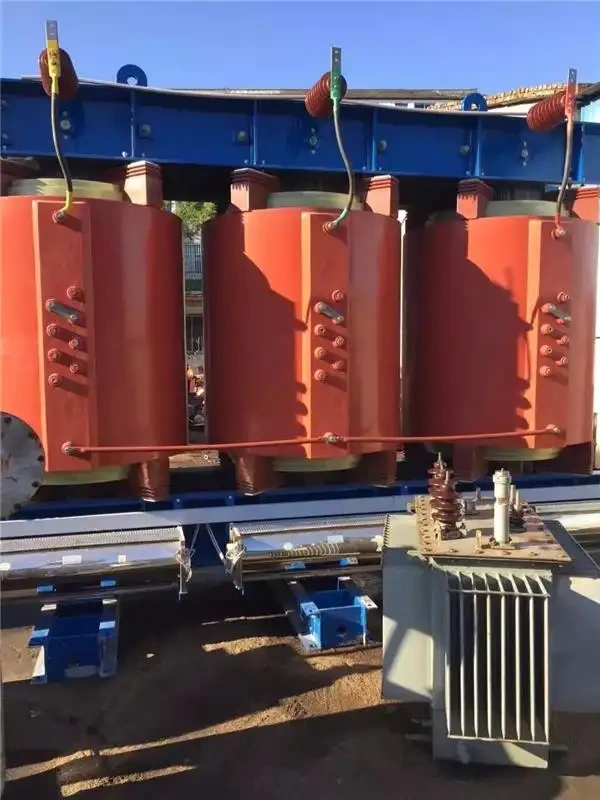
How to Choose Pad Mounted Transformer?
Table of Contents Selecting the right pad-mounted transformer requires careful consideration of several critical
ELECTRIC, WITH AN EDGE
The 11kilovolt (kV) transformer is a common power infrastructure many of us encounter daily without even realizing it. If you’ve ever driven down a rural road and noticed a square or cylindrical piece of equipment mounted on a telephone pole, that’s probably an 11kV transformer. For instance, DAELIM offers a wide option of 11kV transformer prices and types.
DAELIM is an established transformer manufacturer exporting transformers worldwide for nearly 20 years and has a wealth of experience in this field. The engineering staff of DAELIM has studied and mastered many international standards, including IEEE/IEC/ANSI/AS/CSA/DOE/GOST.


The 11kV transformer price usually ranges from USD 1,000 to USD 100,000, depending on what type. DAELIM’s transformers use high-quality materials to construct, making 11kV to 415v transformer prices affordable.
And innovative technology and materials are utilized in the coil, body, insulation, etc. Resulting in minimal no-load and load losses, a uniform magnetic circuit, improved performance and structural reliability, and significant energy savings.
There are many uses and applications for transformers in electrical systems and circuits. Due to their stability and accessibility, transformers can be used in multiple electronic circuits and systems. Using a transformer in an electrical system or circuit has the following benefits:
●Offers simple operation
●Capable of voltage stepping
●Reasonably priced
●Incorporate several connectors for electricity
●Compatible with reverse wiring
●Contains no movable components
●High-performance parts
●Requires the use of electrical isolation
Performing standard and specialized tests on transformers is important to guarantee their health.
●A voltage-ratio analysis
●Single-phase and three-phase transformer polarity
●Three-phase 11kV transformer connection phases
●Temperature winding resistance calculation resistance
●Impedance
●Excitation current
●Transformer efficiency is affected by load loss
●Limits imposed on voltage drops under load
●Induced and applied voltages
The transformer’s placement is of utmost importance. It shouldn’t be in the way of people or things getting where they need to go. They also must not be put in danger by passing vehicles or heavy machinery. Inspecting, assembling, and testing your transformer requires a full set of tools and components for contaminant prevention.
Remember to regulate the transformer noise, particularly when installing in quiet hallways. Because of their audible humming, transformers are most noticeable in less-populated, quieter places.
A transformer’s wiring must include grounding, which must be completed before the circuit is activated. If the windings contact the transformer core or enclosure, the static charge is dissipated, and the transformer is protected.
Additional considerations for 11kV transformer connection and installations include:
●Establishing links that work
●Initial examination
●Injecting the energy load
●Making the right adjustments to the tap
●Final checking and testing
High voltage is defined as greater than 1000V for alternating current and greater than 1500V for direct current by the International Electrotechnical Commission and its national counterparts. According to this criteria, an alternating current of 11kV is deemed high voltage because it is greater than 1000V. Furthermore, high-voltage transformers present an electrical arcing hazard.

All 11kV single-phase transformers have a single primary and secondary winding. These coils are twisted around a steel or iron core, making them exceptionally inductive. The primary winding is merged with the alternating current source, whereas the secondary winding is connected to the load. And when used as step-down transformers, single-phase models are appropriate for home use.
The primary use of 11kV single-phase transformers is in domestic and commercial settings, where the lower voltage is preferable. They are also appropriate for household and light business use because of their low price and minimal electrical input needs. Single-phase transformers have additional advantages, such as:
●Simpler construction
●Reduced manufacturing expenses
●Improved performance by producing 1000-watt AC ideal power supply
In contrast, the primary and secondary 11kV 3-phase transformer prices and features have thrills. There is a 120-degree gap between each pair of coils.
These transformers are housed in enclosures full of dielectric oil to control the output voltage precisely. Considering the 3-phase transformer price, they perform better when supplying electrical power in high-use settings like factories. Using 11kV three-phase transformers provides many advantages, such as:
●Reduced copper use in electrical wiring
●Low operating risk
●Increased performance of the conductor
●Work properly with long-distance electrical connections
Dry-type transformers can only handle up to 33kV of voltage. But most dry-type 11kV transformers rely on air to dissipate heat. The following make use of vacuum pressure impregnation to put air to work:
●Epoxy coating
●Polyester
●Silicone varnish
●Durable resin castings for extreme environments
In addition, dry-type transformers are preferred in interior settings like malls and hospitals since they are more environmentally safe and non-fire hazards.
In keeping the coils at the ideal temperature for best performance, oil-cooled 11kV to 415v transformers’ prices are worth it as they submerge in mineral oil. To transformer tanks, oil is circulated through radiators.
Due to the potential for oil spillage, these transformers are better suited for outdoor installation. They’re better for the environment because they save resources and last longer without requiring extensive repairs.
The voltage in homes is typically regulated using transformers 11kV to 230v. These devices transmit electricity from high-voltage transmission lines to lower-voltage local feeders. All homes in a given neighborhood receive electricity through a network of local feeders.
High-temperature (HT) and low-temperature (LT) power supplies are common in thermal evaporation systems. HT power supply delivers high voltage for DC sputtering and cleaning of plasma growth. These generators use rectifiers to change the alternating current (AC) from the step-up transformers to the direct current (DC).
However, LT power supplies deliver a large current at a relatively low voltage. They are made up of step-down transformers that have a low primary voltage but a large secondary current.

A three-phase, three-wire, 11kilovolt (kV) distribution line is known as an “11kV feeder.” It starts at the first substation and travels through rural communities and farmlands to supply farms, homes, and small businesses. The typical length of an 11kV feeder, from one primary substation to another, is greater than 10 kilometers.
There are also cases where a feeder dies because there are no customers in the area. 11kV/433V distribution substations are located along 11kV feeders and reduce the voltage from 11kV to 400V. Agricultural water pumps and other industrial machinery require power at this voltage.
In conclusion, transformers 11kV to 230v, like low voltage, are a great way to improve a home’s electricity. These transformers are commonly utilized in residential areas to power everyday living. With regards to the 11kV transformer price, it ranges in an affordable scope. Making it worth the price considering its amazing features.
With a reliable manufacturer like DAELIM, you will be ensured that your 11kV transformer price is reasonable and the quality materials used in the process are great. DAELIM can produce transformers satisfying a wide range of international standards thanks to 16 years of experience working on transformer projects abroad.
Download Resource

Table of Contents Selecting the right pad-mounted transformer requires careful consideration of several critical

The primary function of the pad mounted transformer is to serve as a critical distribution

A pad mounted transformer operates through electromagnetic induction, serving as a crucial distribution component that
After filling in the contact information, you can download the PDF.